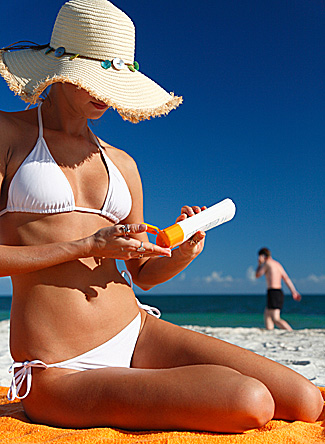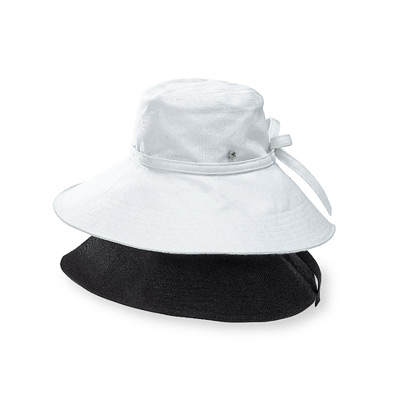Sun Protection

The best sunscreens, plus other tips to keep you from frying
When you’re shopping for sunscreens, is it enough to pick a sun protection factor (SPF) and just choose whatever goo smells best? Not really. According to our tests, some sunscreens do a much better job than others when it comes to protecting you from the damaging rays of the sun. The nine Smart Picks will shield your skin against ultraviolet A and ultraviolet B rays even after exposure to water. Even better, five of our faves cost $8 or less. Here’s why our picks work best, plus five things you need to know about sunscreens.
Not all sunscreens provide great protection. What counts most in a sunscreen is how well it shields you from UVA and UVB rays, which are linked to skin cancer. Plus, you want a product that covers well and doesn’t smell bad.
We looked at creams, lotions, and sprays from All Terrain, Aveeno, Avon, Badger, Banana Boat, BullFrog, Burt’s Bees, Coppertone, Hawaiian Tropic, La Roche-Posay, Neutrogena, No-Ad, Ocean Potion, and Soleo Organics, plus store brands from CVS, Target, Walgreens, and Walmart. All provided protection against UVA and UVB rays. But the best ones did a better job, and many worked up to 80 minutes in water.
We tested by having 167 volunteers in bathing suits sit in front of a special for up to 21/2 hours. Then they soaked in water for 40 minutes (if the product was claimed to be water resistant) or 80 minutes (if the product was claimed to be water resistant after 80 minutes, very water resistant, or waterproof). We also tested whether the sunscreens would stain fabrics and had our sensory experts evaluate how the products smelled and how they felt after application.
A higher SFP isn’t necessarily better. The SPF number represents the UVB protection a sunscreen offers. According to our experts, SPF 30 is enough for most people. It will protect you for about 6 hours if you usually burn in 10 minutes without sunscreen. But you must reapply it every 2 hours and again after you swim or sweat. Sun-sensitive people might benefit from a higher SPF, but it might not be worth paying more to get one. (Our SPF 100 Smart Pick cost more than twice as much as some of the other winners). To clear up the confusion, the Food and Drug Administration is expected to require manufacturers to revise labels so that they will be able to claim no more than SPF 50+.
How and when you put on sunscreen can be as important as which sunscreen you pick. Almost all the sunscreens we tested left stains on cotton, polyester, and spandex, even after washing, so apply them carefully. But don’t skimp! Think of it like this: “You can’t paint a house with too little paint”.
Use about two tablespoons of lotion, or enough to generously cover your entire body. If you prefer a spray, use enough to coat your body – twice, just to be safe. But don’t’ spray your face! Spray sunscreen into your hands and rub it onto your face, being careful to avoid your eyes and mouth. It’s best to put on the first application of sunscreen 15 to 30 minutes before you go outside and before you put on your swimsuit, which might help minimize staining.
Sunscreens contain some worrisome ingredients. You’ve probably seen headlines about controversial sunscreen ingredients. So what’s the real deal? We asked our experts to analyze the latest research, and here’s what they told us: Almost every sunscreen we tested contains some chemical that has been associated with adverse health effects in animal studies. Ingredients such as oxybenzone might interfere with hormones in the body. Nano-sized zinc oxide and titanium dioxide are potentially linked to reproductive and developmental problems. Retinyl palmitate has been linked to an increased risk of skin cancers in animal studies. Retinoids, which are created by retinyl palmitate in skin and are a type of vitamin A, have been associated with a risk of birth defects in people who use acne medications that contain them. As a precaution, pregnant women may want to avoid sunscreens with retinyl palmitate. More research is needed on sunscreens, but for now its proven benefits outweigh the risks of the questionable ingredients, which are not as well understood.
Sunscreen shouldn’t be your only sun protection. To really stay safe, pack one of our Smart Picks (available at drugstores, mass retailers, and online, except where noted) in your beach bag, along with sunglasses, a big hat, and a tightly woven long-sleeved shirt or beach cover-up. And remember that using sunscreen isn’t a license to roast in the sun all day!

HAT TRICK To protect your face and neck, wear a wide-brimmed hat. Look for a tightly woven fabric and a brim of at least 4 inches.
Source: ShopSmartMagzine

